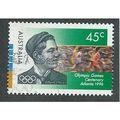Cowes, Isle of Wight - Princess Battery & Landing Stage - postcard c.1905-10
- Condition : Used
- Dispatch : 2 Days
- Brand : None
- ID# : 179902355
- Quantity : 1 item
- Views : 231
- Location : United Kingdom

- Seller : justthebook (+1699)
- Barcode : None
- Start : Sat 20 Apr 2019 12:17:54 (BST)
- Close : Run Until Sold
- Remain : Run Until Sold
More Listings from This Seller view all
Seller's Description
- Postcard
- Picture / Image: Princess Battery and Landing Stage, Cowes, Isle of Wight
- Publisher: 'National' Series
- Postally used: no
- Stamp: n/a
- Postmark(s): n/a
- Sent to: n/a
- Notes / condition:
Please ask if you need any other information and I will do the best I can to answer.
------------------------------------------------
Postage and packing charge should be showing for your location (contact if not sure).
UK - PayPal, Cheque (from UK bank) or postal order
I will give a full refund if you are not fully satisfied with the postcard.
----------------------------------------------
Cowes (/kaʊz/) is an English seaport town and civil parish[4] on the Isle of Wight. Cowes is located on the west bank of the estuary of the River Medina, facing the smaller town of East Cowes on the east bank. The two towns are linked by the Cowes Floating Bridge, a chain ferry.
The population was 9,663 in the 2001 census, which doubles during the regatta in early August. The population at the 2011 census was 10,405.
Charles Godfrey Leland's 19th century verses describe the towns poetically as "The two great Cowes that in loud thunder roar/This on the eastern, that the western shore".
Cowes has been seen as a home for international yacht racing since the founding of the Royal Yacht Squadron in 1815. It gives its name to the world's oldest regular regatta, Cowes Week, which occurs annually in the first week of August. Later, powerboat races are held.
Much of the town's architecture is still heavily influenced by the style of ornate building that Prince Albert popularised.
The name Westcowe was attested in 1413 as the name of one of two sandbanks, on each side of the River Medina estuary, so-called after a supposed likeness to cows. The name was subsequently transferred to fortifications built during the reign of Henry VIII on the east and west banks of the river to dispel a French invasion, referred to as cowforts or cowes. They subsequently gave their names to the towns of Cowes and East Cowes, replacing the earlier name of Shamblord.
The town's name has been subject to dispute in the past, sometimes being called Cowes, and then West Cowes. For example, a milestone from the 17th century exists, calling the town Cowes, but up until the late 19th Century the Urban District Council bore the name West Cowes. In 1895 West Cowes Urban District Council applied for permission to change the name of the town to Cowes officially, and this was granted on 21 August 1895.[5]
Whilst the name Cowes has become well established on infrastructure related to the town (including maps, road signage and postal addresses), the name West Cowes remained on Admiralty charts, used by sailors, until 2015, when it was corrected following a letter from a Cowes resident.[6][7]
Red Funnel, the Southampton-based ferry company that provides routes from Southampton to both Cowes and East Cowes, has continued to use the name West Cowes for the town in information and publicity and as the name for the town's terminal.[8]
Listing Information
| Listing Type | Gallery Listing |
| Listing ID# | 179902355 |
| Start Time | Sat 20 Apr 2019 12:17:54 (BST) |
| Close Time | Run Until Sold |
| Starting Bid | Fixed Price (no bidding) |
| Item Condition | Used |
| Bids | 0 |
| Views | 231 |
| Dispatch Time | 2 Days |
| Quantity | 1 |
| Location | United Kingdom |
| Auto Extend | No |



 for 1 item(s)
for 1 item(s)

















